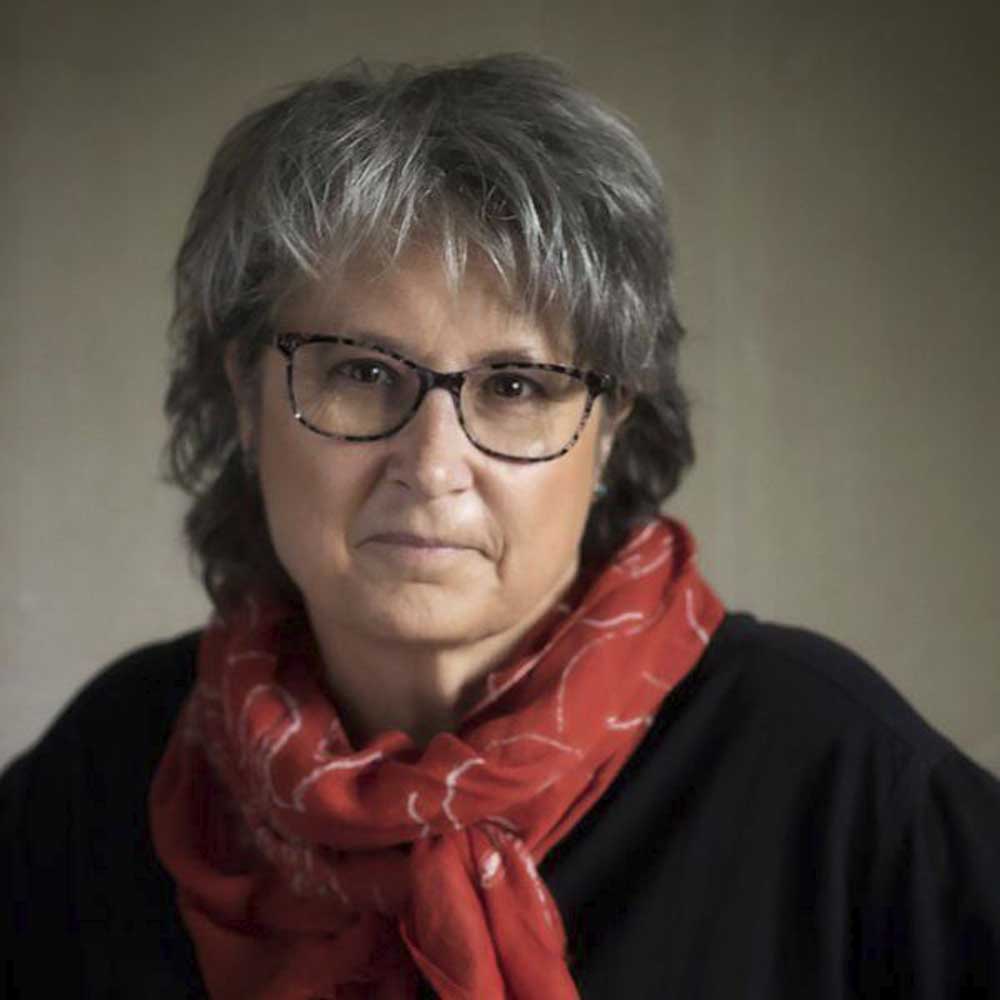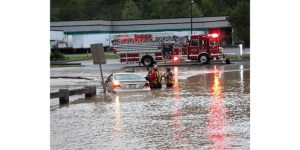Pair of artists unveil exhibitions Friday at the Guild
Published 8:00 pm Monday, November 1, 2021

- Contributed photoLee Anne White's "Deeply Rooted: An Intimate Portrait of Place" opens Friday in the Creative Arts Guild's Gallery FIVE20. "Photography is at the heart of what I do, and it's the way I communicate," White said.
As a landscape photographer, Lee Anne White has spent three decades photographing places all over the globe, but until recently she hadn’t trained her camera on the area where her roots run deepest: the foothills and highlands of the Southern Appalachian Mountains.
“I started before the” COVID-19 pandemic, but as that curtailed travel, it made even more sense to turn her focus local, said White, whose photography will be spotlighted for the next month-plus in the Creative Arts Guild’s Gallery FIVE20 with the “Deeply Rooted: An Intimate Portrait of Place” exhibition. “Getting out in the mountains in late winter and early spring, there was no one out there, (so) it was very quiet.”
Trending
“It gave me a sense of peace and solace at a turbulent time, and I think that’s conveyed in the photos,” said White, who lives in Gainesville and teaches landscape and botanical workshops for Maine Media Workshops and the Madeline Island School of the Arts, as well as in New Mexico, on Amelia Island and online. “Photography is at the heart of what I do, and it’s the way I communicate.”
Spending time in the region where she grew up also led to “remembering my childhood and my family,” she said. “I was thinking about how many people have walked (this terrain) before we were here.”
Among her favorite photographs in this series is one depicting a rope bed in a historic home once lived in by missionaries at New Echota, a historic site in Gordon County that was once the capital of the Cherokee Nation in the Southeast, she said.
“I saw what looked like a cross, but was a key to the bed,” as rope beds required frequent tightening, and “that’s where the expression ‘sleep tight’ comes from.”
White works in both digital and alternative processes, but she has a special affinity for black-and-white prints, and all of the photos in this exhibition are black and white.
“Most of my personal work the past 15-20 years is black and white, and I grew up shooting black and white,” she said. “I started photographing at age 8, and I paid for many of my college expenses with dark room work” before shifting toward color for magazine duties.
Trending
White previously served as editor-in-chief of Fine Gardening magazine — where she was responsible for a third to half of the photos in each issue — and consulting editor for Taunton Books. She has photographed more than 70 magazine features, published more than a dozen books on landscape architecture and garden design, handled commercial assignments for landscape architects and documented historic landscapes for the Library of Congress.
“I love some of the more historic processes, (which) speak to me on a deep level — I’m teaching myself platinum palladium printing — and there’s a special level of craft there,” she said. “I love form, light and shadow, (as) sometimes color gets in the way of the message.”
Her second favorite spot for photography is coastal Maine, a place where she teaches workshops each summer, she said.
“I love that area, and anyone who goes there tells you that.”
However, northern New Mexico remains unsurpassed in her heart.
“I love the broad open spaces, the ancient Pueblo ruins and the adobe architecture, and the vegetation is fascinating,” she said. Her mother was born in New Mexico and lived both in Albuquerque and Santa Fe, so “I feel something in my soul that connects me there.”
“As a landscape photographer, I always look at the land, first, and I look for artifacts of the past, from architecture to crafts, because crafts help tell the history of a place,” she said. While in college, she spent a summer working at what’s now the Northeast Georgia History Center, which sparked her interest in history and crafts.
Weather conditions also impact her photographs.
“I’m looking for mood,” which is why fog is her favorite condition in which to shoot, she said. “Fog hides so much, and I love a simple landscape.”
White compiled a 10-15-minute video detailing the backstory of the photography in “Deeply Rooted: An Intimate Portrait of Place,” and that video will play in Gallery FIVE20. “Deeply Rooted: An Intimate Portrait of Place” opens Friday with an artist reception, as does the exhibition in Gallery ONE11, which spotlights the art of Mayelli Meza. Light refreshments will be available at the artist reception from 5:30 to 7:30 p.m. Friday.
The exhibits will be on display through Dec. 14. The Guild is open 4:30 to 7:30 p.m. Monday; 10 a.m. to 7:30 p.m. Tuesday-Thursday; and 10 a.m. to 4 p.m. Friday, as well as by appointment. To schedule a private appointment, call (706) 278-0168.
“Dalton has been very supportive of my work, (so) it’s a pleasure to go back,” said White, who is a regular at the Guild’s annual Festival juried show and once had a small exhibition of her “botanicals” at the Guild. “They’re great folks, and I love working with them.”
‘I see colors and shadows other people don’t’
Gallery ONE11 will feature watercolors, acrylic paintings and photographic reproductions of nine large murals Meza has completed in the community. She works in various media, from acrylic and watercolor to decorative face painting.
It’s actually decorative face painting that “helped me practice my line work, said Meza, an esthetics instructor, professional makeup artist and muralist. “You have to have a good, steady hand.”
A native of Mexico City who relocated to the Dalton area with her parents when she was 11, “my family (members) were artisans and sculptors, (so) I grew up in that environment,” but in Dalton at that time, “it was hard to get (art) materials,” she said. She was reinvigorated when she began “getting back to crafting” with her children, “getting creative again.”
“I went back to painting, which I really like and enjoy, and the more you do it, the better you become,” she said. “I feel I see colors and shadows other people don’t, and I’m able to do it.”
Her art is informed by her upbringing in Mexico City, but she blends that with her Dalton experiences.
For example, in one painting, a grandfather picks flowers while a grandmother sells them, and while the grandparents reference Meza’s own, those jobs do not, and they’re in a setting with trees and greenery, which is much more Dalton than Mexico City, she said. There’s also “a little girl, and I see myself in her, but she’s in the mountains (here), not in Mexico City.”
Meza “started working with watercolor when we were remodeling our house (and) I had limited space,” she said. “I love to do portraits,” including self-portraits that are part of this exhibition, “with watercolor.”
Acrylic is “more time consuming, and you have to work a lot of the details, (but) with watercolor, it’s limited, (because) the more color and water you put on, you start losing the paper,” she said. “You have to be more specific with acrylic, (but) you can be more loose with watercolor, and I like that.”
However, “with acrylic, you can always fix it — you can cover it — (but) with watercolor, there’s no going back,” she said. “I love to have a texture on my paintings,” too, which acrylic provides.
A series Meza has worked on for years focusing on children at the U.S.-Mexico border will be part of this exhibition, even though she debated whether to include the acrylic pieces.
“It’s a little bit abstract, not graphic — you have to look at little (details) to see (what it’s about) — but I (wondered) how people would perceive it,” she said. “I read the stories (of) kids at the border, and it’s very emotional, (so) it was hard for me to finish those.”
Meza has painted several murals around town, and she’s working on a sprawling piece on the outer wall of The Oakwood Cafe.
“On canvas, your reach is very limited, but you can show (a mural) to all types of people in the community,” she said. “I love working outside, on a large scale, and I love that people can take photos with” a mural.





